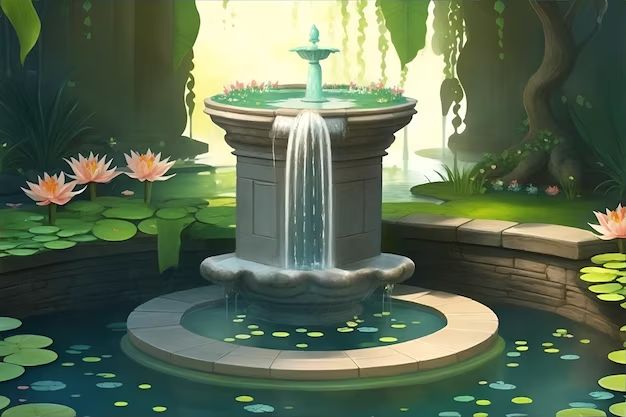Water fountains can provide several benefits for indoor spaces, but also have some potential drawbacks to consider. Here is an overview of the pros and cons of having an indoor water fountain.
Page Contents
Pros of Indoor Water Fountains
Some potential benefits of indoor water fountains include:
- Aesthetics – The soothing sound and appearance of flowing water can enhance the ambiance of a space.
- Humidity – The evaporation from fountains adds moisture to dry indoor air.
- Air purification – The water circulation and evaporation can help filter dust and allergens from the air.
- Stress relief – Listening to the tranquil sounds of flowing water promotes relaxation.
In addition to the general benefits above, certain types of indoor fountains offer additional advantages:
- Tabletop fountains – Small and self-contained, these fountains are highly portable and easy to install. They work well in offices, bedrooms, and other small spaces.
- Wall-mounted fountains – Perfect for entryways and hallways, these fountains don’t take up floor or table space.
- Floor fountains – Free standing large fountains make a dramatic statement in open indoor areas like lobbies and atriums.
Cons of Indoor Water Fountains
Potential downsides to be aware of with indoor fountains include:
- Moisture and humidity – Excess levels can promote mold growth and damage interior finishes.
- Noise – The sounds may be distracting in some settings like offices.
- Leaks and splashing – Fountains must be well-designed to avoid water escaping and causing water damage.
- Maintenance – Fountains require regular cleaning to prevent algae and mineral buildup.
Ideal Placement of Indoor Fountains
To maximize the benefits and minimize the downsides of indoor fountains, optimal placement is key. The best locations in a space for a water fountain are:
- Entryways – Greet guests with a calming water sound.
- Living rooms – Create a relaxing ambiance in leisure spaces.
- Dining rooms – Complement dining with tranquil water sounds.
- Bedrooms – Promote restful sleep with a tabletop fountain.
- Open floor plan areas – Make a bold statement with a large floor fountain as a centerpiece.
- High ceilings – Allow more humid air to circulate up and away from indoor spaces.
Avoid placing indoor fountains in enclosed, poorly ventilated areas where excess moisture can accumulate and cause issues.
Types of Indoor Water Features
There are a few main types of indoor water fountains and features to choose from:
| Type | Description | Benefits |
|---|---|---|
| Tabletop | Small fountains designed for desks, nightstands, etc. | Compact size, low cost, easy to install |
| Wall-mounted | Fountains hung on a wall | Saves floor and table space |
| Floor | Large free-standing fountains | Dramatic focal point |
| Waterfalls/water walls | Water flows down textured panels | Soothing “rain” like sound |
| Ponds with fountains | Self-contained mini ponds with lighting | Adds a natural element |
Choosing the Right Indoor Fountain
Key factors to consider when selecting an indoor water fountain include:
- Size – Ensure the fountain fits the space without overcrowding.
- Style – Match the fountain aesthetics to your interior design taste.
- Material – Consider durability and moisture resistance.
- Water capacity – Select a model with a reservoir to match your maintenance preference.
- Special features – Decide if you want lighting, filtration, etc.
- Noise level – Check decibel ratings if the location demands quiet.
- Budget – Prices range widely, select based on your means.
Carefully evaluate the space and your needs to choose the right indoor water fountain.
Conclusion
Indoor fountains can be a great addition to a home or office when used properly. The relaxing sounds of the water, combined with the visual appeal, create an oasis inside. Be mindful of over-humidifying enclosed spaces and maintaining the equipment. Strategically place indoor fountains in locations where they can provide calming benefits without creating distracting noise. They make an excellent focal point when matched to your interior design style. With a little forethought, an indoor fountain can become a cherished feature that provides enjoyment for years to come.
